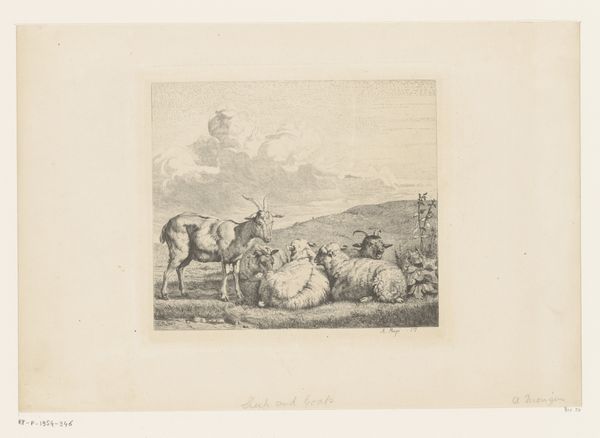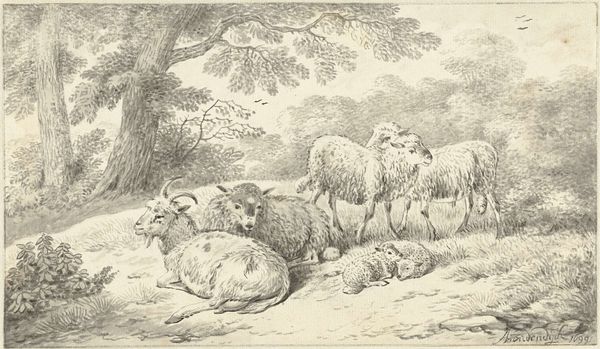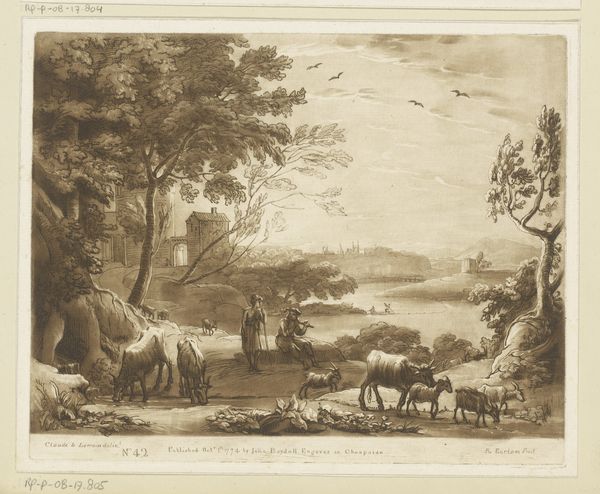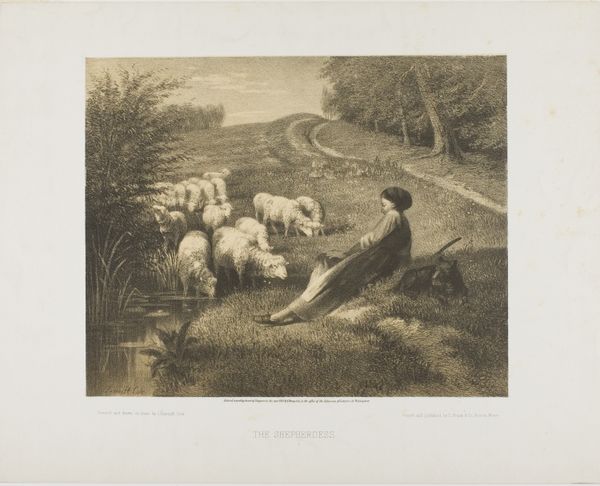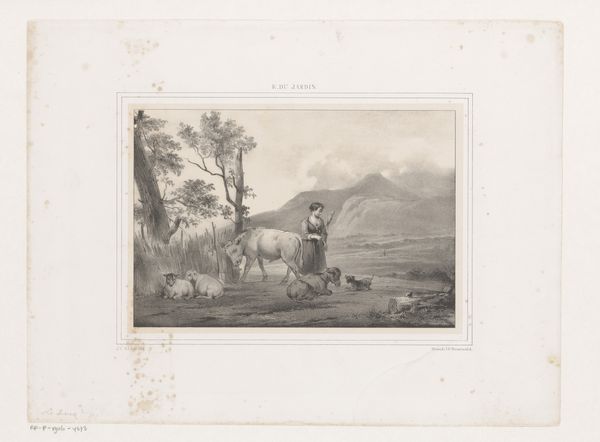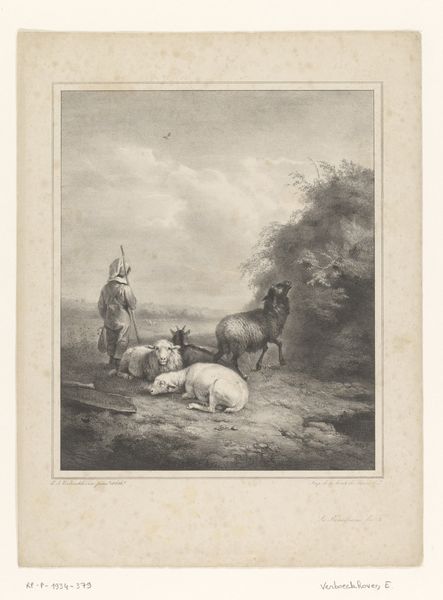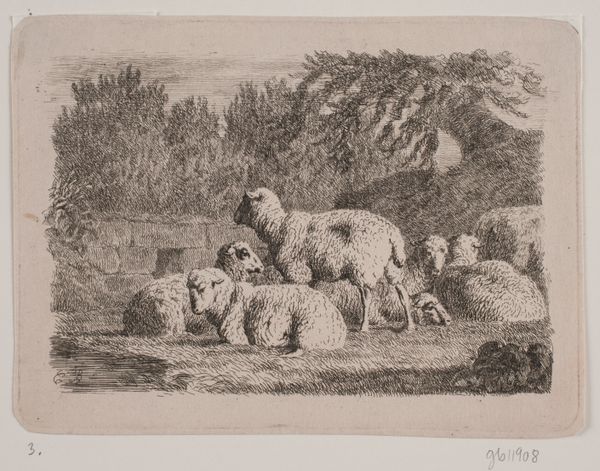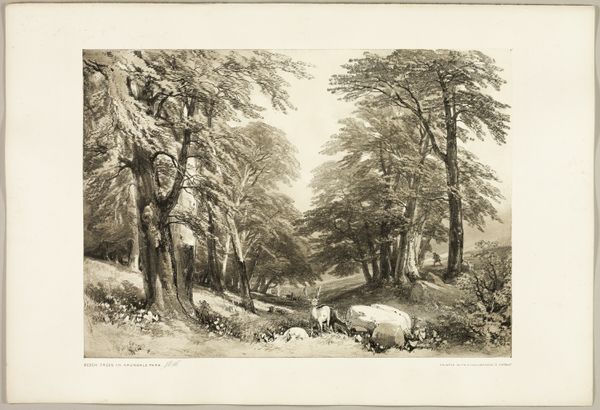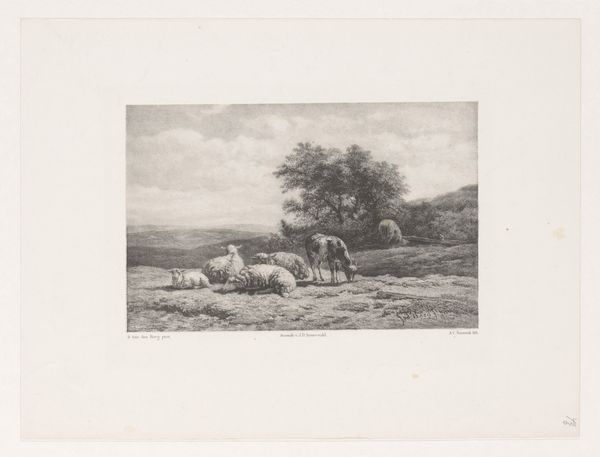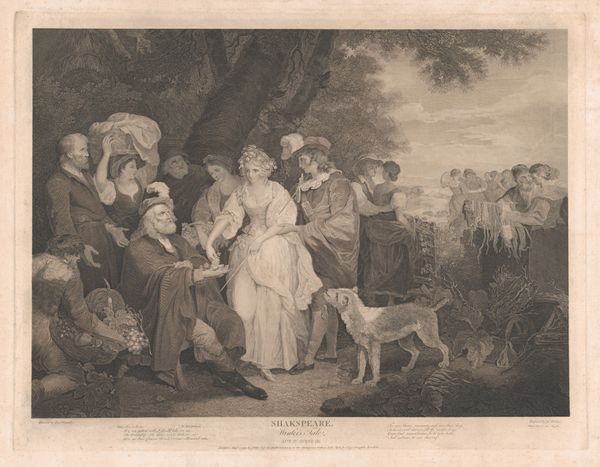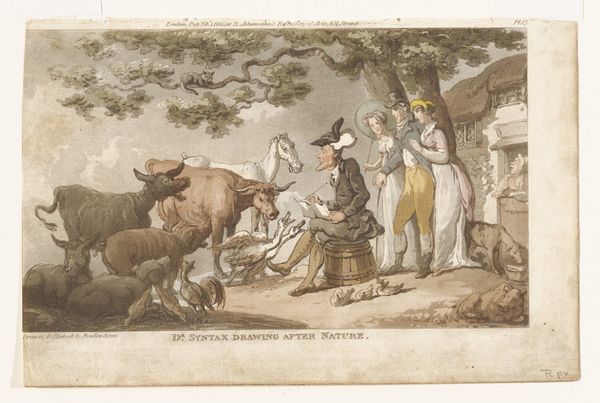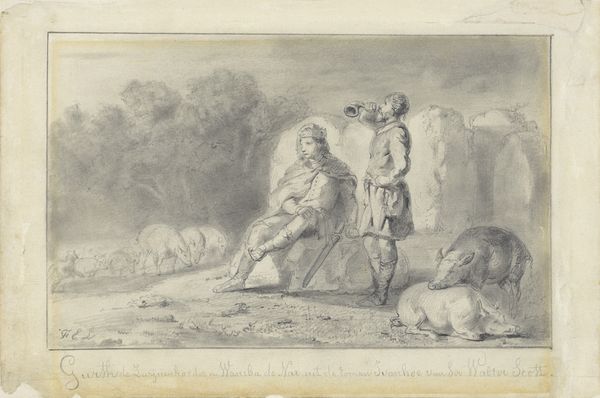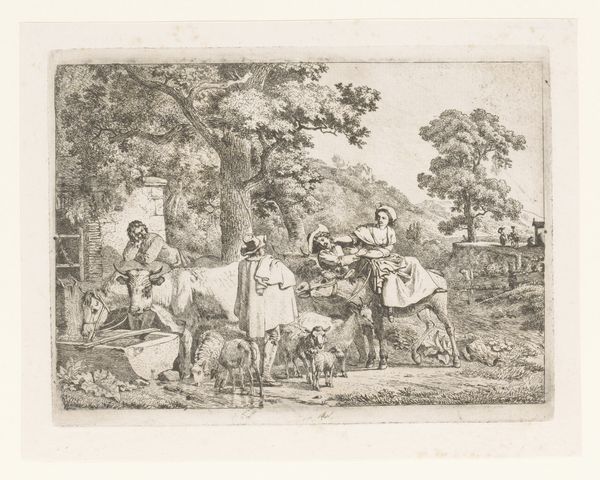
drawing, print, pencil
#
drawing
# print
#
caricature
#
pencil sketch
#
landscape
#
figuration
#
pencil
#
line
#
genre-painting
#
history-painting
#
realism
Dimensions: height 300 mm, width 445 mm
Copyright: Rijks Museum: Open Domain
Curator: This is John Doyle's "Spotprent met Britse schapen," likely from 1846, held here at the Rijksmuseum. Doyle, also known as H.B., was quite the prolific political cartoonist. Editor: Wow, those are some unsettling sheep. They've got human faces! I mean, beyond the kind eyes that sheep tend to have anyway. There’s something darkly comedic about it, a slightly terrifying pastoral scene. Curator: Precisely. The anthropomorphism isn't accidental. Caricature was a key tool for political commentary at the time. These sheep likely represent segments of British society or political figures, seen in the context of economic policy debates. Editor: So who’s the plump gentleman lurking by the tree? The shepherd leading his flock to, what? "Free Trade," the inscription says? Is that some sly commentary about leadership—or lack thereof? Curator: It's very probable. We have to understand the debates around the Corn Laws at this time; protectionist policies versus the appeal of free trade, which deeply divided British society. Editor: Right, protection versus cheaper imports, class conflict and all that. Looking closely, the dog near the 'Protected' sign seems to be guarding something the sheep are leaving behind, such as… their fleece? Their former livelihoods? Curator: Doyle is definitely invoking loaded imagery here. He's playing with anxieties surrounding the changing economic landscape and how these policies were seen to affect various segments of British society. The drawing makes a very forceful argument by associating certain faces with very different policy arguments. Editor: It's pretty savage, honestly. Using those almost realistic faces... it really drills the point home, doesn't it? It’s not just about sheep being led; it's about specific *people* being, in the artist's opinion, misled. You feel the anger. Curator: The power of political caricature lies exactly in that affective impact, in weaponizing humor and recognition for a pointed critique. Doyle doesn't just present an argument; he evokes a strong emotional response. Editor: I'll say. Even today, seeing it out of context, you feel that sting. Doyle, though a long time ago, really has a talent for timelessly unsettling you. Curator: Absolutely. A fascinating look into the intersection of art, politics, and public sentiment in 19th century Britain.
Comments
No comments
Be the first to comment and join the conversation on the ultimate creative platform.
